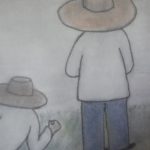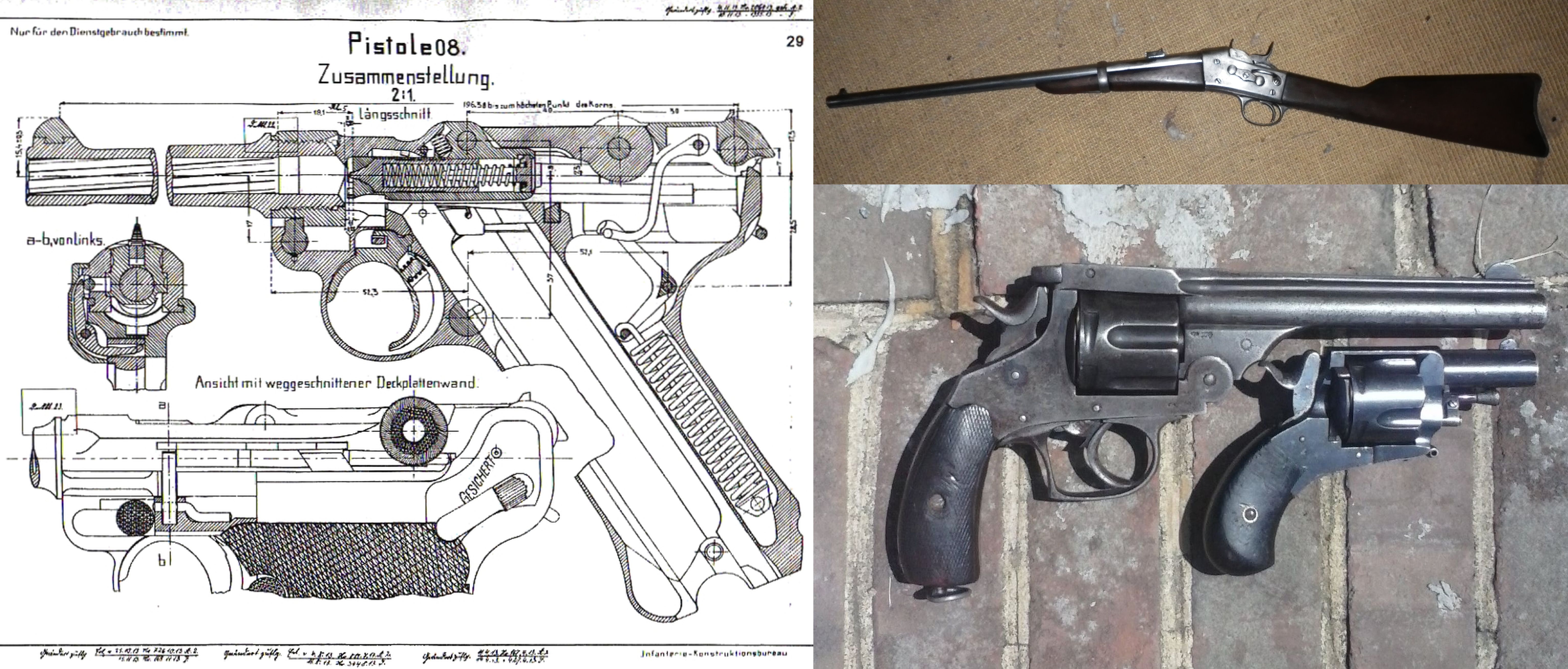Home › Forums › Antique cartridge rifles › The Sharps 50-70 carbine
Tagged: The Sharps 50 70 carbine
- This topic has 4 replies, 2 voices, and was last updated 6 months, 1 week ago by
 LittleMan.
LittleMan.
-
AuthorPosts
-
-
August 1, 2019 at 18:37 #12845
Anonymous
InactiveRecently became the new owner of a nice original 1863 Sharps Carbine. Does anyone know what bullet it requires? If a comercial bullet is not availble, does anyone know what the correct mold would be. I do not want to spend 200.00 for one. I only want to shoot it a few times.
Thanks ahead of time
-
August 4, 2019 at 16:51 #12964
 LittleManKeymaster
LittleManKeymasterThe gun requires black powder centerfire cartridges.
Brass is hard to get, but reloading dies do exist.
The normal load is 70grains of FF powder under a 425 gr. soft lead bullet of .512 diameter.The best (only really) place I know to obtain pre-loaded .50-70 US cartridges is the website below.
-
July 30, 2022 at 11:16 #14101
 LittleManKeymaster
LittleManKeymasterThe original caliber for the 1873 Sharps carbine was .54. If I owned one of those percussion breech loaders I would probably be giving these a try.
https://www.midsouthshooterssupply.com/item/00002ac1597at/54-caliber-348-grain-aero-tip-copper-mag-power-belt-(15-per-pack) -
October 4, 2024 at 16:50 #15015
 LittleManKeymaster
LittleManKeymasterYou have not specified if your carbine is one of the ones converted AFTER the US Civil War, or if it is one of those not converted and released as surplus in it’s original configuration. Originally the gun used a paper or linen cartridge that used a percussion cap to firie a .54 caliber bullet. Battle experiences during the war convinced the US Army that percussion cap systems were obsolete and cartridges were a better tool. The US Army then developed a new cartridge called the .50-70 for use in their rifles and carbines. A few thousand of a hand selected group of Sharps Carbines were selected and converted to use this cartridge. The conversion required reducing the bore diameter down and replacing several parts of the action. Some of the guns got new barrels, some of them had their barrels re-lined with a reduced diameter sleeve. Both configurations require Black Powder use as neither used high carbon steel in construction. Guns not converted were released to civilians as surplus. Converted weapons were issued to US soldiers. (It is worth noting the US Army also converted many percussion rifles to a trapdoor pattern that also fired the .50-70 cartridge.) The ‘Civilized Tribes’ of the Oklahoma Indian Territory had broken their Treaty with the US and sided with the Confederacy during the Civil War, but their commanding general and former President and Principle Chief, Stand Waite, refused the terms of the Confederate Surrender at Appomattox General Waite and his soldiers continued hostilities against US soldiers and civilians. His War Crimes provided justification for the 30 year period known as the Indian Wars and led to the Western expansion of the US across the former Indian Territories. Many Sharps carbines and Trapdoor rifles were used in this period. Early in the Indian Wars a decision was approved to force the Indians into submission by eliminating their primary food source, the American Bison. At the same time the East Coast of the US was in great demand of a meat source for their crowded cities. The US Army began offering a cash bonus for every set of buffalo (bison) ears while at the same time traders of the East were offering cash for buffalo fur and meat. To aid in the extermination of the Indian ‘menace.’ the US Army began issuing FREE rifles and ammunition to any person who showed up at a Western Army fort and wanted to hunt buffalo for a living. Tens of thousands of former Civil War veterans from both sides as well as new immigrants to the US rushed to take advantage of the offer and become ‘Buffalo Hunters.” Both types of Sharps carbines saw use. At the same time Indians who agreed to live on their assigned reservation were also sold these rifles at their trading post so they could hunt. A famous photograph of Geronimo which shows him holding his Sharps carbine is at this link.. http://totallyhistory.com/wp-content/uploads/2013/04/Geronimo-with-rifle.jpg Within a decade the great buffalo herds of the era were extinct although the Wars against American Indians continued until the end of the 19th century. Usually .529 diameter bullets work well in percussion Sharps carbines. This website both sells such bullet molds and also has videos showing how to make the paper (or treated linen) cartridges one needs. https://www.erasgonebullets.com/store/product/-54-richmond-sharps If however your Sharps carbine is one of the converted ones, you can’t use those bullets and need complete .50-70 Black Powder cartridges. Live .50-70 rounds can be obtained at/from https://www.buffaloarms.com/50-70-sharps-black-powder-ammo-amobp5070425.html Hope this helps.
-
-
-
AuthorPosts
- You must be logged in to reply to this topic.
